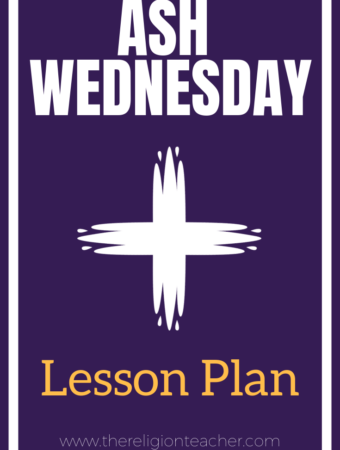Since Advent of last year I have had an incredible experience praying the Angelus every day. At first I started praying it at noon each day. Then I added it to my morning prayer routine. Now, I have reminders set in my phone for 6:00 a.m., noon, and 6:00 p.m. to tell me that it is time to pray the Angelus (or the Regina Coeli during Easter). My wife and children have begun to pray the Angelus each day as well.

It has been a great experience and I’m excited to share it with others. Today, on the feast of the Annunciation, I’m launching a small side project I am very excited to share. You can find it here:
There was a certain point in our Church’s recent history in which students were required to pray the Angelus at noon each day. In fact, praying the Angelus was a common practice for all Catholics no matter where they were during the day. I think this would be an incredibly valuable practice to reestablish. At the very least, I invite you to share it with your students on this Feast of the Annunciation.
Update: After creating the website, I decided to write an entire book about the Angelus and Regina Caeli! You can get a copy of this book here to help you meditate on the words of these powerful prayers.
Buy The Angelus & Regina Caeli Book >
The Angelus Prayer Text
Introduce your students to the Angelus prayer today! Print out this PDF and share it with the students to use when you pray. As the leader you will read the “V.” and the students will respond with the “R.” To close, you will read the final prayer beginning “Let us pray.”
Download the PDF of the Angelus Prayer and Regina Coeli.
The Angelus Domini
V. The Angel of the Lord declared unto Mary.
R. And she conceived of the Holy Spirit.
Hail Mary, full of grace,
The Lord is with Thee;
Blessed art thou among women,
And blessed is the fruit of thy womb, Jesus.
Holy Mary, Mother of God,
Pray for us sinners,
Now and at the hour of our death. Amen
V. Behold the handmaid of the Lord.
R. Be it done to me according to your word.
Hail Mary. . .
V. And the Word was made flesh.
R. And dwelt among us.
Hail Mary. . .
V. Pray for us, O holy Mother of God.
R. That we may be made worthy of the promises of Christ.
Let us pray: Pour forth, we beseech Thee, O Lord, Thy grace into our hearts, that we to whom the Incarnation of Christ Thy Son was made known by the message of an angel, may by His Passion and Cross be brought to the glory of His Resurrection. Through the same Christ Our Lord. Amen.
Note: During the season of Easter, we actually pray the Regina Coeli in place of the Angelus Domini. It is a prayer that celebrates the wonderful joy of the Resurrection. Find it at theangelusprayer.com/regina-coeli.
An Introduction to the Angelus Prayer for Children
At first glance, the Angelus seems just like any other Catholic prayer that students are required to memorize, but it is so much more than that. I truly hope you will grow to share the passion I have for praying the Angelus as a meditation on our lives as disciples. And I hope you will be moved to share it and pray with your students when possible.
Here are a few reasons that your students should pray the Angelus:
1. They need a break.
When introducing the Angelus, share the value of praying at designated times during the day. The practice of praying the Angelus is linked to three times each day: dawn, midday, and dusk. It developed and grew as a habitual part of the day of Catholics for centuries. When we make the commitment to join with others in prayer at a specific time, we have to overcome our excuses that we don’t have time to pray or have other more important things to do. We have to tell ourselves that no matter what we are working on at this very moment, it is infinitely less important than dedicating our lives to God in prayer.
When the angel Gabriel appeared to Mary, I’m sure she had important things to do. I’m sure she was right in the middle of something she wanted to complete. She wasn’t ready for the drastic change in her life, but she was open to it. She set aside her plans and her intentions and opened herself up to God’s will.
When we pray the Angelus, we set aside our to do lists, our homework, our assignments, our never-ending list of things to accomplish and we turn to God and say, “Lord, let it be done to me according to your word (not mine).” We need that break. Our children need that break. They need the reassurance that no matter what they do, no matter if they succeed or fail, we can trust in God to provide.
Tell them: Let go and let God.
2. They probably won’t “get anything out of it” and that’s the point.
The purpose of prayer is not to “get something out of it.” We don’t score points for keeping a perfect record for praying the Angelus. The prayers don’t magically make us better people. Feelings come and go and have no connection to how impactful prayer really is in the world.
Through the Angelus, we meditate on the words of Mary who called herself the “handmaid of the Lord.” Mary was God’s servant. The Lord was with her. The Lord loved her and she knew it. All she could do in response was offer herself in service to his will.
Ask students to consider how different this is from the mindset of getting something out of prayer. When we pray to feel more spiritual–to get something out of it–we make God the handmaid. We tell him he needs to make us feel good. He needs to give us something. He needs to serve us.
One of the most important lessons we can teach our children is exemplified by Mary in the Angelus: “Behold the handmaid of the Lord. . . be it done to me according to your word.” The leader (V.) tells the people to behold Mary, our model, our hope, and we respond (R.), “Yes, thy will be done.”
It may be cliche, but it is memorable: Ask not what your God can do for you, but what you can do for your God.
3. It’s Biblical so anyone can do it.
The Angelus is a meditation on the words of Luke 1 and John 1. It is Biblical and anyone can do it. For students who may not be Catholic or those who are skeptical about Catholic beliefs about Mary, remind them that this is a meditation on the Bible. We pray to know God more through his sacred word.
If they are uncomfortable with asking for Mary’s intercession or her title as Mother of God (V. Pray for us, Holy Mother of God. R. That we may be made worthy of the promises of Christ.), then it is worth having a discussion about it in class. It would be a great opportunity to clarify that Catholics do not worship Mary, but they give her due respect.
Pray the Angelus Online
As I mentioned at the beginning of this article, I am excited to share and invite others to pray the Angelus digitally. For centuries it was the bells of churches and monasteries that reminded Catholics to stop everything and pray the Angelus prayer (or the Regina Coeli during Easter). In today’s society, those bells are seldom rung, heard, or heeded.
In those days society was structured geographically. The bells worked very well since most people lived in earshot of the churches and monasteries. Today, society is structured globally and digitally. We need some new bells.
I would like to invite you and your students to sign up for the new Angelus bells. “Like” The Angelus Prayer on Facebook and pray with us each day in the morning, midday, and evening. Follow the @angelusprayer on Twitter and get reminders about the Angelus and Regina Coeli.
Check out http://theangelusprayer.com for more information and to join me in learning to appreciate even more the great beauty of Mary’s fiat, the power of the Incarnation, the working of the Holy Spirit in our lives, and the grace that God has given us through the Paschal Mystery.
Get The Religion Teacher’s Prayer Worksheet Collection
The Religion Teacher’s Prayer Worksheet Collection includes thirty printable handouts to help kids meditate on the meaning of popular Catholic prayers and devotions. This resource features worksheets with meditations on the Hail Mary, Angelus, Mealtime Prayer, Acts of Faith, Act of Hope, Act of Love, Act of Contrition, Memorare, and more!




Thank you, Jared, for sharing this information about the Angelus! I will share this with my students and their parents this afternoon.
Easter blessings!
thanks Jared I follow your lesson through out , I also share this with my students. good work and keep up.
Thank you Jared!
This is a beautiful prayer that I will include in my daily prayer regimen!
Jared,
I love coming to your website when looking for new ideas to share with my students. I always find things that will enrich my prayer life as well. I am blessed to have you as a great resource and a friend.
Hello! I just found your website and saw this article. When my first graders came back from lunch recess it was hard for them to calm down and begin working. Then I realized they came back at noon….perfect time to pray! I taught them 1/2 the prayer (we stopped after the last Hail Mary). It was amazing how calm and quiet they were. In fact one day I had to talk to a few kids by the door and they started without me! Then during the last few months of school, I had one of them lead it instead of me. They took ownership of it and were really excited. I figured if first graders could do it, anyone can!
Wow, what a great testimony! Thanks Molly. An after-recess angelus prayer is such a great idea.
I appreciate this treasure of knowledge you have shared here, Jared. Blessings! Ave Maria!
Hi, Jared! What a treat to happen upon your website when I was looking for a printable Angelus prayer. You have saved me a great deal of time. 🙂 I hope you and your family are doing well!
Recently, I have been reflecting on my time living in Muslim countries where the powerful and rhythmic call to prayer brought reminders to me for regular prayers in my Catholic traditions as well. I have often lamented that as Catholics we do not have something similar, and then I came across the Angelus! I am looking forward to your book and to incorporating this prayer into my life and that of my own children.
Awesome Kelli! I am so glad to read this.